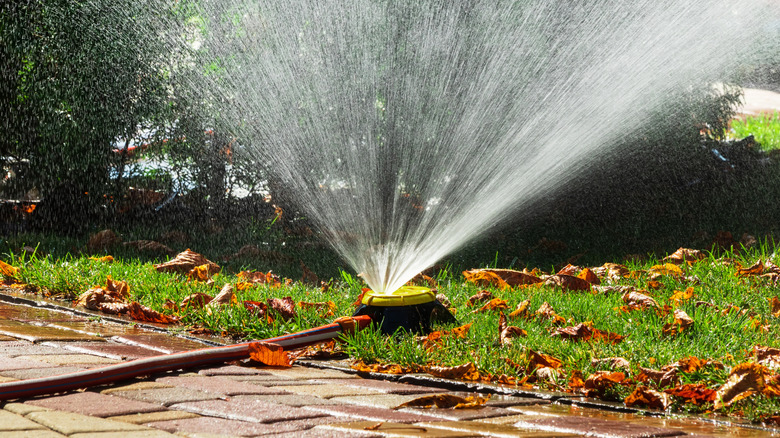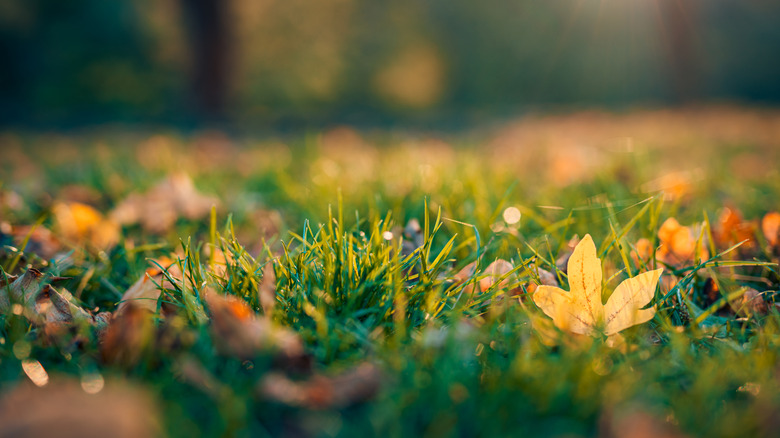Is Watering Your Lawn In The Fall Worth The Cost? Here's What We Found
While cleaning up leaves in the yard this fall, you might wonder exactly when you can stop watering the grass. Grass needs water through summer, and of course, it's an annoying, time-consuming task. However, it's a good idea to keep going through most of fall, and stop when the grass begins to hibernate — usually by mid-November.
If you see your grass is still green and growing, it can benefit from a regular source of water even in the fall. To maintain that lushness, watering may be worth the cost. During growing months, most lawns need around ¼ an inch of water a week. And sometimes this isn't a cheap proposition. Every homeowner knows they pay for any water that doesn't fall from the sky. A U.S. water bill can run anywhere from $20 to $100 a month, and according to NASA research, in some areas, 75% of that bill went directly to water the lawn. It shouldn't be a surprise since the average water usage of sprinklers runs about 15 gallons a minute.
As the weather cools and autumn rains fall, you might want to save money and cut back on watering. But lawns use cool, wet weather to recover from the scorching days of summer. Keep up regularly watering until grass goes dormant or the chill in the air becomes ever present and the ground gets hard. Once cold weather really sets in and the ground gets hard, watering won't help your grass anyway, since it won't seep into frozen ground.
When to stop watering your lawn
Before grass goes dormant in late fall, don't skimp on watering ... but be careful not to overwater, either, especially during rainy weeks. People often get into more trouble overwatering their lawn than underwatering it, so don't make that mistake. Also, avoid turning off the spigot and stopping watering all at once, all of a sudden. You don't want to give your lawn a shock right before winter.
If you're eager to put away your sprinkler, first look for signs that your grass is dormant. It'll stop growing and might start to look more like straw. Grass can do this in the cold weather of late fall, but it can also happen during the hot and dry months of summer as well. If your grass goes dormant in the summer, just cut back to a minimum level of watering. In the fall, cutting back slowly might be the best watering strategy. As your grass goes dormant and the weather cools, gently taper off to give your grass the best chance to thrive on the other side of winter.
Water isn't the only thing to think about this fall with your grass. Autumn might actually be one of the best times to fertilize your lawn. Nourishing roots in November, right before winter, will bode well for better grass next spring. So feel free to go ahead and weed and feed in the fall for best results in the spring.

